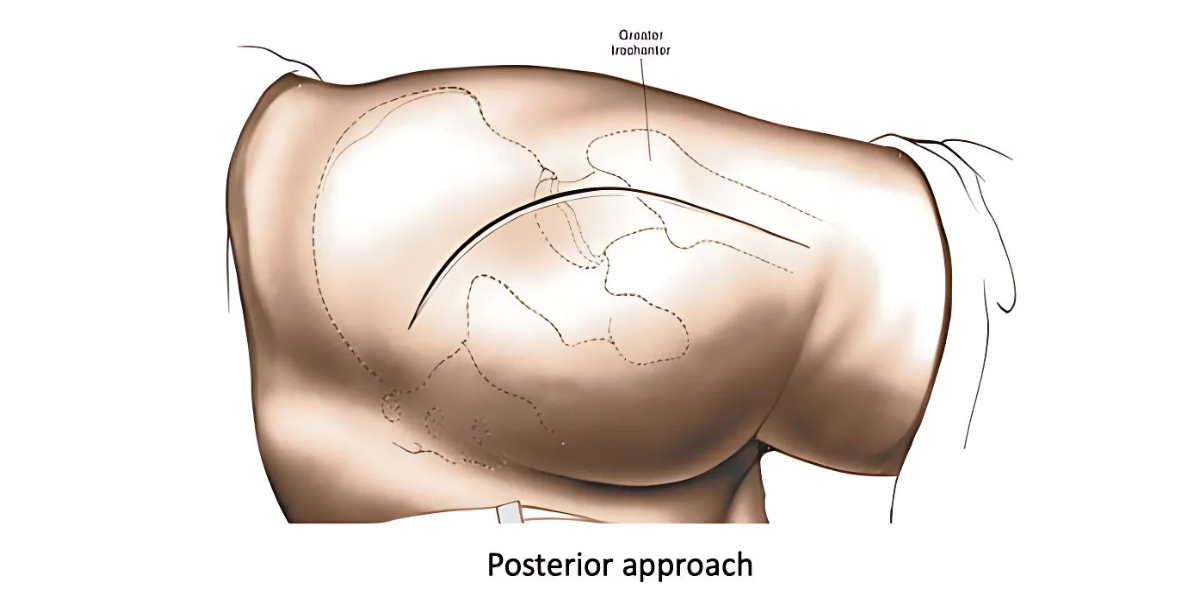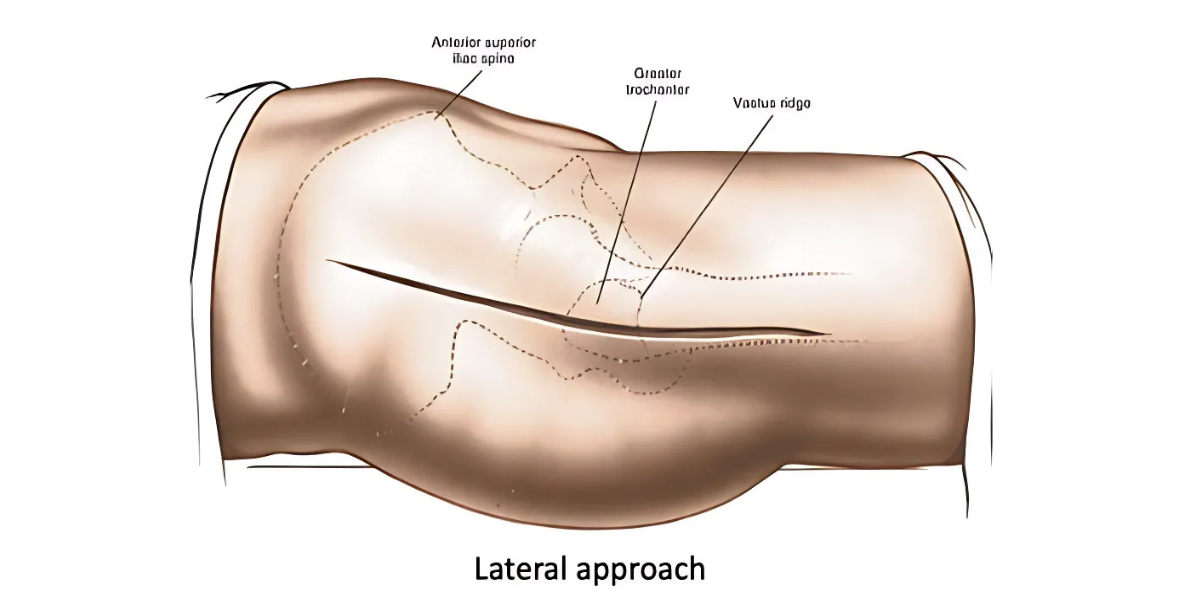Hip Replacement Surgery
The primary goal of hip replacement is to relieve pain, improve mobility, and restore independence. While the prosthetic implant plays a major role in long-term success, the way the surgeon accesses the joint determines how much trauma is caused to surrounding muscles and tissues.
Direct Anterior Approach
Approaches the Hip through the front
 No muscles are cut and all major muscles are spared to reach the Hip Joint.
No muscles are cut and all major muscles are spared to reach the Hip Joint.
- Offers rapid recovery,
- Has least dislocation risk
Minimal or no movement precautions are advised due to minimal risk of dislocation - Maintains gait and hip strength.
Posterior Approach
Approaches the Hip through the back
 Involves cutting through Gluteal muscles to reach the Hip Joint
Involves cutting through Gluteal muscles to reach the Hip Joint
- Has a longer recovery
- Has higher dislocation risk.
Certain movement precautions are advised to reduce the risk of dislocation - Affects gait and hip strength which recovers over time
Lateral Approach
Approaches the Hip from the side
 Involves cutting the abductor muscles to reach the Hip Joint
Involves cutting the abductor muscles to reach the Hip Joint
- Has a longer recovery
- Has lesser dislocation risk
Some precautions are advised to reduce risk of dislocation - May affect gait and hip strength that may persist
| Factor | Direct Anterior | Posterior | Lateral |
|---|---|---|---|
| Muscle cutting | None | Yes | Yes |
| Pain levels | Low | Higher | Moderate |
| Hospital stay | 1-2 days | 3-5 days | 3-4 days |
| Use of Walking Aid | 1-2 days | 1-3 weeks | 1-3 weeks |
| Return to daily life | 2-4 weeks | 6-8 weeks | 6-8 weeks |
| Dislocation risk | Low | High | Moderate |
· Muscle preservation - quicker mobility
· Reduced pain - less reliance on painkillers
· Shorter hospital stay - sometimes same-day discharge
· Earlier return to work and daily life
· Lower dislocation risk compared to posterior approach
Quality of life improvements
Improved mobility leads to independence sooner, especially critical for elderly and active patients.
Patient satisfaction scores
Higher satisfaction rates are reported due to less pain, smaller scars, and quicker recovery.
Long-term functional outcomes
While long-term implant survival is similar across approaches, patient-reported outcomes remain better with DAA.
The choice of surgical approach in hip replacement profoundly impacts recovery speed, comfort, and quality of life. The Direct Anterior Approach stands out for its muscle-sparing benefits, reduced pain, shorter hospital stays, and earlier return to daily activities. While surgeon expertise and patient suitability remain critical factors, growing clinical evidence supports the anterior approach as a pathway to faster recovery and enhanced patient satisfaction.
As more surgeons gain expertise and technology advances, the Direct Anterior Approach is likely to become the preferred standard for hip replacement worldwide.